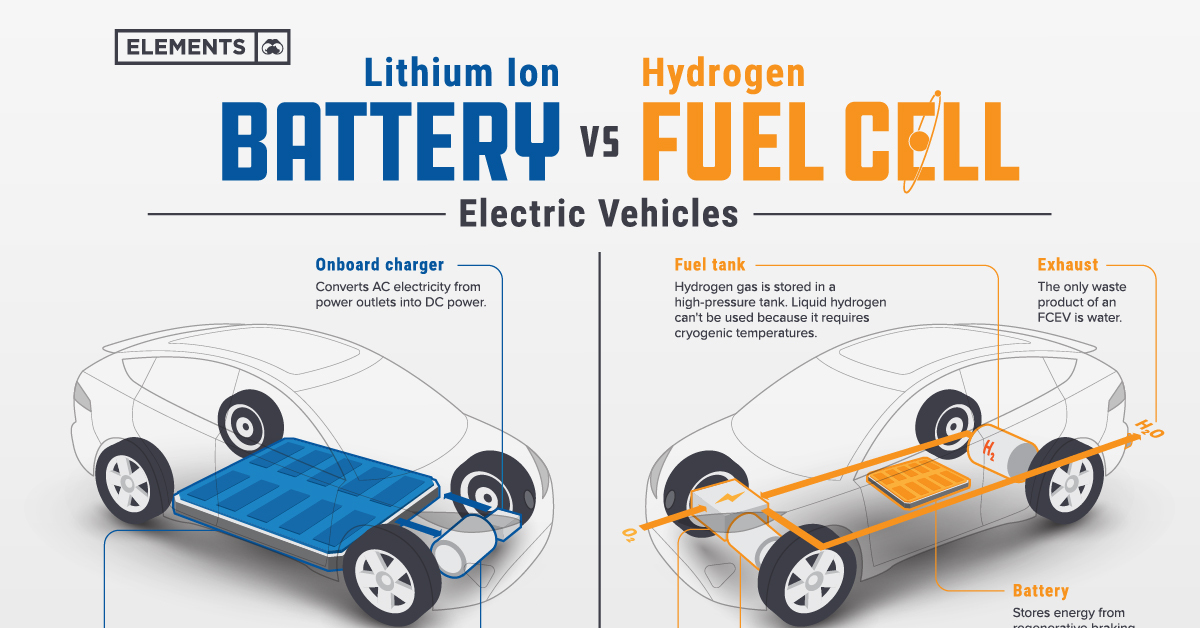Choosing The Right Bus Technology: Hydrogen Vs. Battery In Europe

Table of Contents
Battery Electric Buses (BEBs) in Europe
Battery electric buses (BEBs) represent a mature technology for electrifying public transport in Europe. Their widespread adoption is driven by several key advantages, but also faces certain limitations.
Advantages of BEBs:
- Lower initial purchase cost compared to hydrogen buses: BEBs generally have a lower upfront investment cost, making them more accessible to many public transport operators, especially those with smaller budgets. This is a significant factor influencing the rapid adoption of electric bus technology across Europe.
- Mature technology with established charging infrastructure in some European cities: In many major European cities, charging infrastructure for electric buses is already relatively well-developed. This reduces the initial investment needed for infrastructure upgrades and allows for quicker deployment of BEB fleets.
- Reduced maintenance compared to hydrogen fuel cell systems: BEBs typically require less maintenance than hydrogen fuel cell buses, leading to lower operational costs over the vehicle's lifespan. Simpler mechanical systems mean fewer potential points of failure.
- Quiet operation: The near-silent operation of BEBs is a significant advantage, especially in densely populated urban areas, contributing to a more pleasant environment for both passengers and residents.
- Suitable for shorter routes and high-frequency services: BEBs are well-suited for routes with shorter distances and high frequencies, as seen in many city bus networks across Europe. Their shorter refuelling time (charging) makes this model efficient for regular use on shorter routes.
- Many BEB models are available from numerous manufacturers: The market offers a wide variety of BEB models, providing operators with diverse options to choose from based on their specific requirements and preferences.
- Government incentives and grants often support BEB adoption: Many European governments offer financial incentives and grants to encourage the adoption of BEBs, making them a more financially attractive option for public transport authorities.
Disadvantages of BEBs:
- Limited range compared to hydrogen buses, impacting longer routes: The limited range of BEBs poses a challenge for longer routes and rural areas where charging infrastructure may be scarce or insufficient. This necessitates more frequent charging stops, impacting overall efficiency.
- Charging infrastructure needs significant investment, especially in rural areas: The lack of widespread charging infrastructure remains a major obstacle, particularly in less densely populated regions of Europe. Installing charging stations requires significant financial investment and logistical planning.
- Battery lifespan and replacement costs are significant long-term expenses: Battery degradation over time is an inherent limitation. The cost of replacing batteries after several years of operation can be substantial, impacting the overall cost-effectiveness of BEBs in the long term.
- Higher electricity consumption, especially in cold weather conditions: Cold weather significantly reduces the effective range of BEBs due to increased energy consumption for heating and battery performance. This is a critical factor in many European countries with cold winters.
- Battery production and disposal raise environmental concerns: The production of batteries requires significant resources and energy, and their disposal presents environmental challenges related to material recycling and waste management.
Hydrogen Fuel Cell Buses (HFCBs) in Europe
Hydrogen fuel cell buses (HFCBs) offer an alternative pathway to zero-emission public transport in Europe. While still a developing technology, it addresses some of the limitations of BEBs.
Advantages of HFCBs:
- Significantly longer range than BEBs, suitable for longer routes and rural areas: HFCBs boast a much longer range than BEBs, making them ideal for longer routes and regions with limited charging infrastructure. This makes them more suitable for rural services.
- Faster refueling time compared to battery charging: Refueling a hydrogen bus is significantly quicker than charging a battery bus, minimizing downtime and increasing operational efficiency.
- Potential for using green hydrogen produced from renewable energy sources: Using green hydrogen, produced from renewable energy sources, significantly reduces the overall carbon footprint of HFCBs, aligning with Europe's sustainability goals.
- Reduced weight compared to BEBs with equivalent range: HFCBs can achieve comparable range with less weight than battery-electric counterparts, offering advantages in terms of energy efficiency and maneuverability.
- Hydrogen offers energy security advantages compared to reliance on electricity grids: Utilizing hydrogen reduces reliance on electricity grids, which can be particularly beneficial in regions with unstable power supplies.
- Hydrogen infrastructure development receives significant EU funding: The European Union is investing heavily in the development of hydrogen infrastructure, which will make HFCBs increasingly viable in the coming years.
Disadvantages of HFCBs:
- Higher initial purchase cost compared to BEBs: The upfront cost of HFCBs is currently higher than BEBs, making them a less accessible option for many operators.
- Hydrogen refueling infrastructure is currently less developed in Europe than charging infrastructure for BEBs: The lack of widespread hydrogen refueling infrastructure is a significant barrier to wider HFCB adoption. The infrastructure gap needs addressing.
- Hydrogen production and storage present technological challenges and environmental concerns if not using green hydrogen: The production of hydrogen can be energy-intensive and may involve greenhouse gas emissions if not produced from renewable sources.
- Higher maintenance costs compared to BEBs: HFCBs may require more complex and costly maintenance compared to BEBs.
- Potential safety concerns related to hydrogen storage and handling need careful management: Appropriate safety measures and regulations are crucial to mitigate potential risks associated with hydrogen storage and handling.
Factors to Consider When Choosing Bus Technology
Selecting the optimal bus technology requires careful consideration of several key factors.
Route Characteristics:
Analyze route length, frequency, and terrain. BEBs are ideal for shorter, frequent routes, while HFCBs are better suited for longer, less frequent routes. Consider the typical passenger load and the time spent on the road.
Infrastructure Availability:
Assess the existing charging and refueling infrastructure in your region. The lack of infrastructure can be a significant barrier for both technologies. Plan for future infrastructure needs carefully.
Operational Costs:
Evaluate the total cost of ownership, including purchase price, energy costs, maintenance, and battery/fuel cell replacement. Long-term operational costs are crucial in making a financially sound decision.
Environmental Impact:
Consider the overall carbon footprint, taking into account the source of electricity for BEBs and the production method for hydrogen in HFCBs. Choose the option that best aligns with sustainability goals.
Government Incentives and Regulations:
Explore available grants, subsidies, and regulations that favor specific technologies in your region. Government support can significantly influence the overall cost-effectiveness.
Conclusion
The choice between hydrogen and battery electric buses for European public transport depends on a careful evaluation of various factors, including route characteristics, infrastructure availability, operational costs, and environmental impact. While BEBs currently offer a more mature and cost-effective solution for shorter routes and urban areas, HFCBs present a compelling option for longer routes and areas with limited charging infrastructure, particularly with the development of green hydrogen production. Thorough planning and consideration of these factors are crucial for selecting the optimal bus technology and building a truly sustainable transportation system. Make an informed decision today by thoroughly researching hydrogen vs. battery electric bus options available for your specific needs.

Featured Posts
-
 Cavaliers First Round Playoff Opponent Revealed A Complete Breakdown
May 07, 2025
Cavaliers First Round Playoff Opponent Revealed A Complete Breakdown
May 07, 2025 -
 Lewis Capaldis Post 2023 Return Live Performance At Tom Walker Charity Concert
May 07, 2025
Lewis Capaldis Post 2023 Return Live Performance At Tom Walker Charity Concert
May 07, 2025 -
 Will Xrp Ripple Make You Rich A Balanced Perspective On Investment Potential
May 07, 2025
Will Xrp Ripple Make You Rich A Balanced Perspective On Investment Potential
May 07, 2025 -
 Cavaliers Win Over Bulls Secures No 1 Eastern Conference Seed
May 07, 2025
Cavaliers Win Over Bulls Secures No 1 Eastern Conference Seed
May 07, 2025 -
 Smfg Eyes Minority Stake In Indias Yes Bank
May 07, 2025
Smfg Eyes Minority Stake In Indias Yes Bank
May 07, 2025
